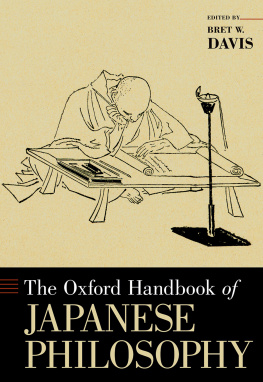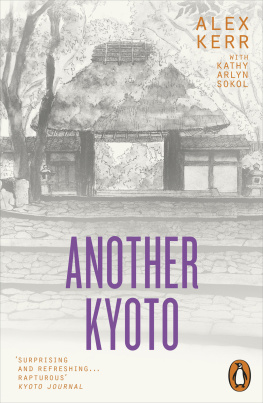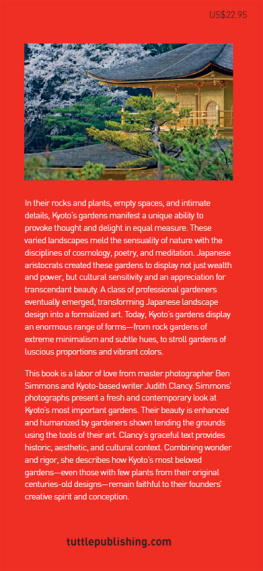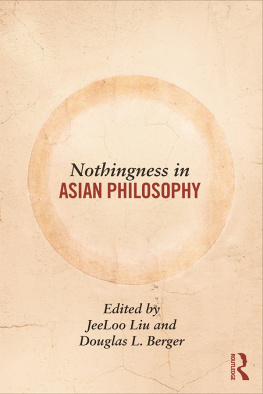Paul Standish and Naoko Saito (eds.) Contemporary Philosophies and Theories in Education Education and the Kyoto School of Philosophy 2012 Pedagogy for Human Transformation 10.1007/978-94-007-4047-1_1 Springer Science+Business Media Dordrecht 2012
1. Sounding the Echoes By Way of an Introduction
A haunting scene in Kon Ichikawas 1955 film Kokoro shows two men treading water in the sea. One, the older man, has swum out by himself. From the shore, the other, a young man, sees him waiting, possibly floundering, apparently beyond earshot The young man sees him and swims out. We see the older mans head bobbing above the surface, and the water dense and opaque beneath. When they are close, the two men look into each others eyes, but between them there is a distance, an absence that is not going to be filled.
We see the man as if floundering, but not because he cannot swim. And we see water, closer to us, but not as we might see if it we were there: we see water bobbing against a pane of glass, water in cross-section. We see a cinematically coded illusion of immersion; a glass screen marks our separateness.
This scene occurs towards the middle of the film, by which time we have learned something of this relationship, though much of the past remains submerged at present, its significance murky and wavering, and the future is suspended before us. But we have been told enough to know that the older man will be referred to by the younger as sensei which is to say teacher, but teacher in a sense that is broader, wider, and more resonant in Japanese than that terms significance in English: the term incorporates the associations of mentor, guide, older friend, for example or in some ways those of matre in French. So this is the story of an educative relationship between friends, where one is significantly older than the other. We might recall dialogues of Plato, where we see Socrates in relationships of this kind. In a Japanese context, this will carry connotations of respect for learning and authority, and for superior age, with a sense of indebtedness for the gift that the teacher bestows. Satoji Yanos paper, of this volume, eloquently explains the importance and the ramifications of this, demonstrating in the process the power of the notion of indebtedness in Japanese ways of thinking.
The story proves to be rather more complex, however. The sensei in the story turns out to be someone whose early educational ambitions have been blighted by his being cheated of an inheritance. It is telling also that the reclusive life of learning he subsequently commits himself to, so it seems, is not given any substance in the film: we do not know what he is studying, and his commitment to this comes to seem more like a withdrawal, from his marriage and from the world.
But the image is there also at the start of the film, even as the titles are in view, prompting us to speculate further as to its significance. The film, released in 1953, was made in the decade following the devastation and defeat of Japan during the Second World War, and it is difficult not to see here something of the struggles of re-connection following trauma. The film is based on the novel of the same name by Soseki Natsume published in 1914, giving us a date that together with that of the film seem to embrace or frame the period during which the Kyoto School was moving through its most flourishing and most influential phases. Rapid industrialization and change during the time that the novel surveys, starting roughly in the middle of the Meiji era but encompassing its ending in 1912, make this a time during which intergenerational relationships and structures of subjectivity figured in peoples consciousness in unprecedented ways and the understanding of inheritance and loyalty were newly tested. This was plainly a time of rapid change for Japan at political and military levels, ultimately with disastrous consequences, but also in terms of the national psyche.
Although the film was not particularly well received at the time of its first release in Japan, it quickly gained recognition abroad, and it is now regarded as a key work in Ichikawas oeuvre . It is appropriate to acknowledge, however, some of the ways in which the film departs from the novel, ways that realize an autonomy for the film but that risk distorting the achievements of the book. The inevitable economies the film effects in terms of the events of the story are used to make less explicable the behaviour of the central character, and the departure from its narrative structure in turn makes this character into someone whose actions are heartless and cruel, and whose motivations are harder to fathom without recourse, that is, to a more psychoanalytic reading. Such a reading prompts explanation in terms of layers of repression, including the repression of homosexual desire, with correlates in suggestions of impotence and sadism. Yet this is scarcely evident in the book.
Insofar as Kokoro , the novel and the film, are to be seen as speaking to the larger disturbances of the respective ages of their production, this invites a reading in terms of a sense of loss of inheritance, with the suggestion also that one has somehow been cheated of this, that one has been deprived or that something has been denied, or perhaps that a promise has not been honoured. If the uncomfortable allegorical associations of the story are pressed, this is to figure the young mans attraction to the sensei in terms of the (willing) turn to Western culture during the Meiji era and the (forced) adoption of Western practices following the Second World War. But to the extent that this is a cogent reading, it is important to register also the nature of the limitations of the sensei himself. As has been pointed out, there is an uncertainty about his credentials as a sensei . Just what is his expertise, his field of study? How genuinely is he moved by this and how far is it, as implied above, a kind of impotent retreat from the world, compounded with its own forms of negativity, resentment, and denial? This would be a semblance of education; to see through this would be an education in itself. Any suspicion of this or disillusionment on the part of the younger man is at most hinted at in both novel and film. But the reader is positioned similarly in terms of what these works have to teach, and the heart of the matter proves to beat to a rhythm that is other and less vibrant than one initially expects. To the extent that the sensei can be symbolic in this way, these works reflect a wariness about the relation to the West, and a latent scepticism about the quality of some of its attractions. This is an ambivalence that has characterised the Japanese reception of Western thought and practices.
The year 1911 saw the first translation into Japanese of a complete work by Nietzsche, Thus Spake Zarathustra . And although the vast and sometimes contradictory nature of Nietzsches work had led to widely divergent readings in Japan, what must have been clear was that here also, in this supreme work of a German thinker, was an account of the vacuousness at the heart of Western bourgeois culture. Indeed sometimes Nietzsche was perceived to be writing in an Eastern vein. In his contextualisation of a discussion of the reception of the early thought of Nietzsche in Japan, Graham Parkes () highlights the significance of the ending of the prohibition of Christianity that had come with the Meiji Restoration, with the new attention to the inner life that this allowed, as well as the gradual turn, towards the end of the nineteenth century, away from philosophies of positivism and utilitarianism in the direction of German Bildung . But into this picture must also be brought the new nationalism that came with victory in the war against China, a war that was in part a response to aggressive Western colonialism. The elements of Confucian tradition the ideas of the family state ( kazoku kokka ) and national morality ( kokumini dotoku ), as well as the divinity of the Emperor as the father of the nation-family were diametrically opposed to any form of individualism. In this context, the rapid development of the school and university systems reflected the ways that education was seen as essential to the inculcation of national morality. Yet there were tensions here with the policy, during the Meiji era, of sending to the West such young intellectuals as Soseki himself in order to discover what was going on, in terms of literature, the arts, science, and therefore education. These are some of the contradictory forces at work in the complex context that needs to be considered.










